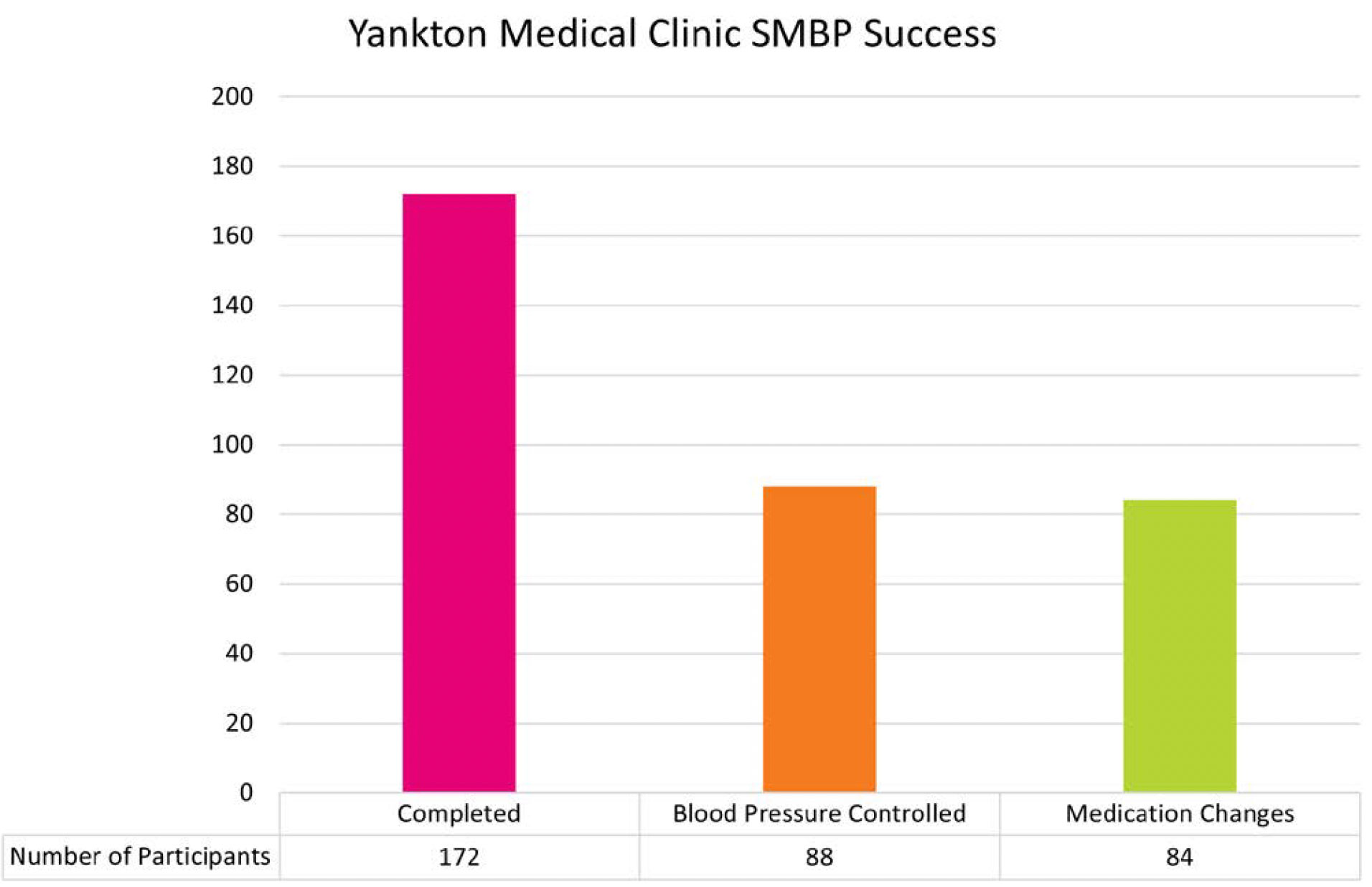Yankton Medical Clinic Implements Self-MeasuredBlood Pressure Monitoring Program: Taking Ownership of One’sOwn Health
Summary
Hypertension is a leading risk factor for cardiovascular disease, including, but not limited to, stroke and coronary artery disease. It continues to be an exceedingly common diagnosis amongst patients, especially in rural South Dakota. The rate of hypertension in rural settings is approximately 40% of patients compared to 29.4% in more urban populations.1 Regular blood pressure monitoring by the entire health care team with a patient-centered approach is ideal when striving to achieve optimal control of high blood pressure. The Yankton Medical Clinic, P.C. recognized the importance of this approach which led to the development of a selfmeasured blood pressure (SMBP) program for members of our community. Furthermore, the diagnosis of hypertension should not be made alone on a single, elevated clinical blood pressure. Instead, the diagnosis of high blood pressure should be made in conjunction with out-of-office BP measurements to sufficiently recognize masked hypertension and white-coat hypertension2. This project aimed to address the challenge of controlling blood pressure in patients with an elevated blood pressure measure in the clinic. In 2019, 31% of adults in South Dakota were informed of high blood pressure by their healthcare provider; however, only 55% of those patients were informed that their blood pressure was controlled.3 The range for blood pressure control can vary depending on medical conditions. Generally, controlled blood pressure is defined as systolic blood pressure less than 140 mm Hg and diastolic blood pressure less than 90 mm Hg.2
Results
A total of 100 new participants were enrolled throughout the data collection period. 172 new participants completed the SMBP program. The number of participants who were considered controlled based on identification of white coat hypertension, no further intervention required, or as not having hypertension was a total of 88 participants. Lastly, a total of 84 new medication changes were made because of this program. The numbers from this grant were staggering and glaringly successful.
Timeline
Providers began recruiting patients to participate in the SMBP program in September, 2022. Recruitment took place on a rolling basis. The SMBP grant ended May 31, 2023, but Yankton Medical Clinic, P.C. will continue to encourage the use of SMBP methods after completion of the project period.
Challenges / Barriers
This project initially faced barriers in recruiting patients. One eligibility requirement was primary residence in South Dakota. A sizable portion of the patient population at Yankton Medical Clinic, P.C. have primary residence in another state, making these patients ineligible for participation. Another challenge was physician participation. While some physicians declined to monitor through the program due to increases in coding and time requirements, this did not mean that clinicians were not endorsing home monitoring of blood pressures.
Successes
The impact of the program is evident by the marked increase in the proportion of patients with controlled blood pressure. Previous studies report controlled blood pressures in 55% of patients not participating in a SMBP program while 88% of patients in this SMPB program were classified in the controlled blood pressure range.3 Medication adjustments were made in a more timely manner with close patient monitoring and follow-up. In some cases, providers were able to titrate down antihypertensive therapies, reducing the risk of adverse effects and excess cost to patients. This especially reduces risk of polypharmacy in patients requiring medical management of multiple comorbid conditions. Patients reported satisfaction with the decreased medication dosages.
Patients reported appreciation for taking ownership in their health management through home blood pressure monitoring. Providers felt the patients had a stronger investment in their blood pressure management when they were expected to report back to the provider with an assignment of filling out their log in a week’s time. Employment of the SMBP program inspired a community outreach project. The medical students involved in this project started a blood pressure monitoring booth at Yankton’s local food banquet. Medical students attended the banquet once a month and offered blood pressure measurements. Medical students also raised awareness about the importance of blood pressure monitoring and control to the patrons attending the banquet. Attendees were made aware of the resources available in the community to seek medical follow-up if needed.

Next Steps / Other Information
The Yankton Medical Clinic, P.C. will continue to utilize self-measured blood pressure in patients who would be candidates for closer blood pressure evaluation and intervention. This SMBP program successfully started a movement towards better blood pressure managements at the Yankton Medical Clinic, P.C. for providers and patients.
References
1. Samanic CM, Barbour KE, Liu Y, Wang Y, Fang J, Lu H, Schieb L, Greenlund KJ. Prevalence of self-reported hypertension and antihypertensive medication use by County and Rural-Urban Classification—United States, 2017. MMWR Morb Mortal Wkly Rep 2020;69 (18):533–9. www.ncbi.nlm.nih.gov/pmc/articles/PMC7737951/. doi: 10.15585/ mmwr.mm6918a1
2. Shimbo D, Artinian NT, Basile JN, Krakoff LR, Margolis KL, Rakotz MK, Wozniak G, On behalf of the American Heart Association and the American Medical Association Self-Measured Blood Pressure Monitoring at Home: A Joint Policy Statement From the American Heart Association and American Medical Association. Circulation. 2020. www.ahajournals.org/doi/10.1161/CIR.0000000000000803?url_ver=Z39.88-2003&rfr_id=ori:rid:crossref.org&rfr_ dat=cr_pub%20%200pubmed
3. South Dakota Department of Health, Office of Health Statistics. (n.d.). The Health Behaviors of South Dakotans 2019, Hypertension and Cholesterol. Retrieved August 17, 2021 from doh.sd.gov/statistics/2019BRFSS/ HypertensionCholesterol.pdf.